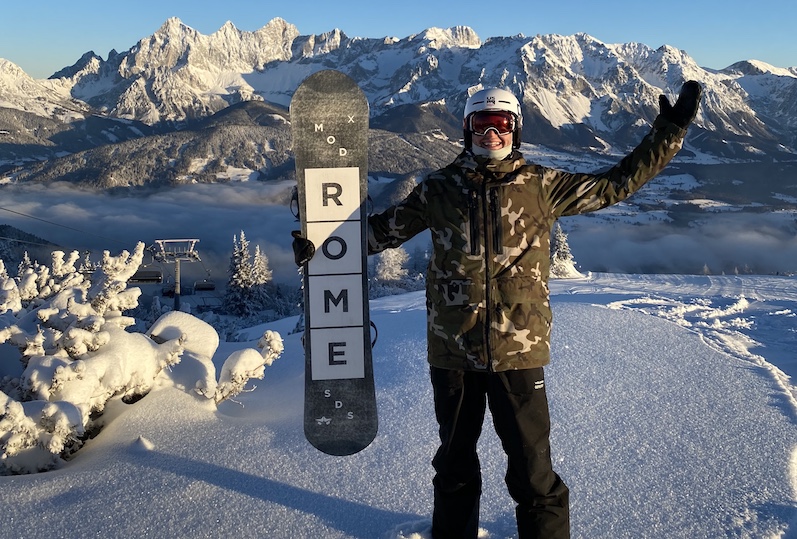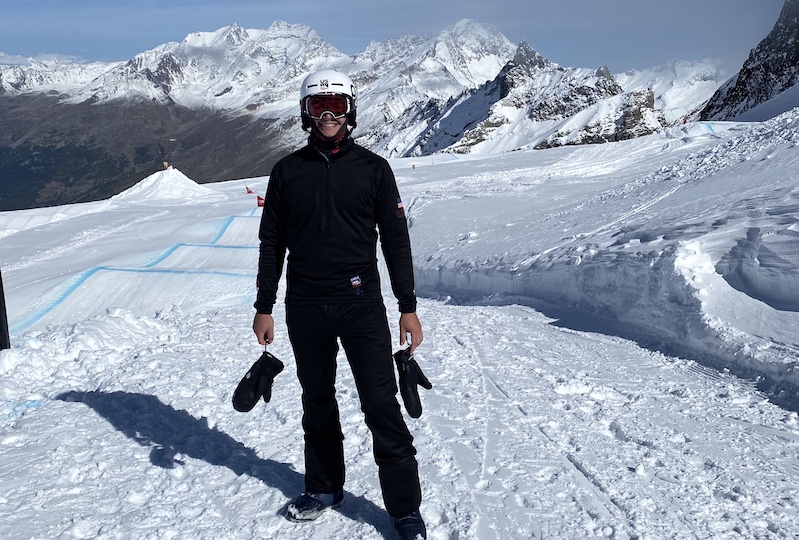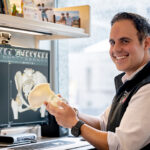Returning to sports after having COVID-19

Mikey LaCroix, age 23, competes in snowboard cross for the U.S. Snowboard Team. In late 2020, he was diagnosed with COVID-19 and had mild symptoms including a low-grade fever, chills, and loss of smell and taste that lasted about two weeks.
Before returning to the slopes after his illness, Mikey had to go through specific steps for his team to clear him to practice and compete again. However, for many young athletes, the guidelines for returning to their sport after having COVID-19 are not as well-defined. Many aren’t sure when it’s safe to return to practice or competition or whether they need to see a doctor before doing so.
Key takeaways:
- Serious heart involvement after COVID-19 infection is uncommon.
- Boston Children’s sports medicine and cardiology experts have developed guidelines to screen athletes for any risk post COVID-19.
- Most athletes can return to play with limited, or in some cases, no testing.
- All athletes should respect their recovery and gradually return to play, as with any medical issue or injury.
To help answer these questions, we turned to turned to three experts from Boston Children’s Hospital: Dr. Gian Corrado from the Sports Medicine Division, Dr. Naomi Gauthier, cardiologist and director of the Cardiac Fitness Program, and Dr. Suellen (Moli) Yin of the Department of Cardiology. They are part of a team of Boston Children’s sports medicine and cardiology experts who have developed guidelines to screen athletes for any risk post COVID-19.
Are these guidelines for all young athletes?
These guidelines are especially important for any athlete doing high-level competition, such as those on competitive club teams, varsity teams in high school or college, or beyond. This includes anyone who needs a pre-participation form for their team to participate in their sport. We want to make sure an athlete engaging in competitive activity does not have heart inflammation before they return to play.
Those returning to less competitive levels of activity, such as gym class or recreational sports, should call their PCP after COVID-19 to see if they need any further evaluation.
Is it safe for most athletes to return to their sport after COVID-19?
The good news is that the vast majority of young people do fine after having COVID-19, and most are able to go back to sports with no problem. But one potential concern is that those who have had COVID-19 can sometimes develop heart inflammation, or myocarditis. Myocarditis can cause abnormal heart rhythms and can sometimes lead to long-term damage to the heart. In rare cases, it can also cause sudden death during high-intensity activity. This is why we’ve developed guidelines to help young athletes understand when a consult with a doctor or cardiologist after COVID-19 infection is necessary.
Do athletes need to see a doctor if they tested positive for COVID-19, but had mild or no symptoms?
It’s a good idea for any athlete who has tested positive for COVID-19 to check in with their primary care physician (PCP) before starting sports again. If they had symptoms that could be related to the heart, such as dizziness, fainting, irregular heartbeat, or unexplained chest pain or shortness of breath, their PCP can determine if they need more testing or a consult with cardiology.

Mikey’s return to snowboarding
Mikey LaCroix answers our questions about his recovery and return to the slopes.
What testing did you need to clear you to play?
U.S. Ski and Snowboard requires a complete history and physical exam; a blood test for troponin, which checks for heart muscle damage; a blood oxygenation test at rest and at exertion; an electrocardiogram (ECG); and an echocardiogram. I had my ECG and echocardiogram done at Boston Children’s, and then met with Dr. Gian Corrado from sports medicine to go over my results. He explained the tests to me and said that my heart was healthy and I was all set to return to high-intensity training.
How soon after recovery did you go back to snowboarding?
I returned to training about three weeks after my positive test; 20 days after my symptoms resolved.
How long did it take to get back to a full training schedule?
It took me 18 days to return to a full training schedule, following the five stages to return to training required by U.S. Ski and Snowboard. These stages allowed me to gradually increase my heart rate and the time I exercised over a period of 18 days. I started with light aerobic exercise for less than 15 minutes and a heart rate less than 70 percent of maximum, and gradually worked up to resuming my full spectrum of aerobic, anaerobic, and resistance exercises with a heart rate exceeding 80 percent of maximum.
Do you have any advice for other athletes who have had COVID-19?
I would say to take your recovery seriously. Even if you have mild or no symptoms, it is very important to follow steps similar to the ones I had to go through. Jumping right back in to high-intensity activities has a chance to be very dangerous, despite your age or level of fitness.
What if they had more moderate or severe symptoms?
Any athlete who had severe illness requiring hospitalization or multisystem inflammatory syndrome in children (MIS-C) should be evaluated by a cardiologist before returning to sports.
If they had moderate symptoms — such as prolonged fever, chills, body aches, or lethargy — they may also be at higher risk. Because we still don’t know everything about COVID-19 and how it might affect people in the longer term, we are advising patients who had moderate symptoms to ask their PCP if they need a cardiology consult. If they had any symptoms that could be related to the heart (listed above), their PCP may recommend that they see a cardiologist before returning to sports.
How long should athletes wait to go back to sports after a COVID-19 infection?
Those who had minimal or no symptoms should wait at least 10 days after the positive test, as long as they have had no fever for 24 hours and their other symptoms are improving. Those who had more moderate or severe symptoms should wait until they have had at least 10 days without symptoms and have had an appropriate evaluation based on the guidelines we’ve outlined here.
All athletes, even those who have seen a doctor and been cleared, should have a gradual return-to-play plan from their trainer or coach, taking at least 7 to 10 days to get back to their baseline activity. They should also continue to watch for any symptoms and report those to their doctor.
What if they develop symptoms once they start playing again?
If athletes have any symptoms once they return to play, they should be re-evaluated. If athletes or their parents have any questions or concerns about symptoms, they should reach out to their PCP.
Learn more about the Sports Medicine Division, the Department of Cardiology, and Boston Children’s response to COVID-19.
Related Posts :
-

3D imaging could become standard practice in orthopedics. Here’s how.
It took a trained eye to see the abnormality on the patient’s X-ray. There, hidden behind the acetabulum was ...
-

Four things you should know about MAPCAs treatment
As the first grandchild in her family, Hannah Homan is in demand for frequent visits. She was also the focus ...
-

Treating MAPCAs with unifocalization surgery and cardiology care
Children born with a rare form of tetralogy of Fallot (ToF) face a challenging type of congenital heart ...
-

After surgeries to treat HLHS, Carter is healthy and happy at home in Florida
Carter Miller loves action. The 4-year-old Florida resident enjoys riding on golf carts and flying high on swing sets. ...





